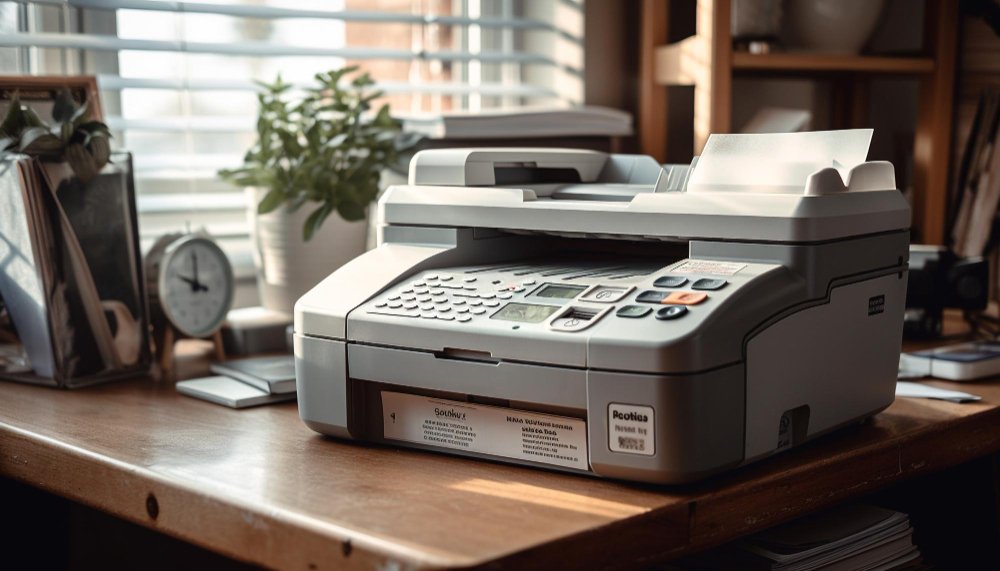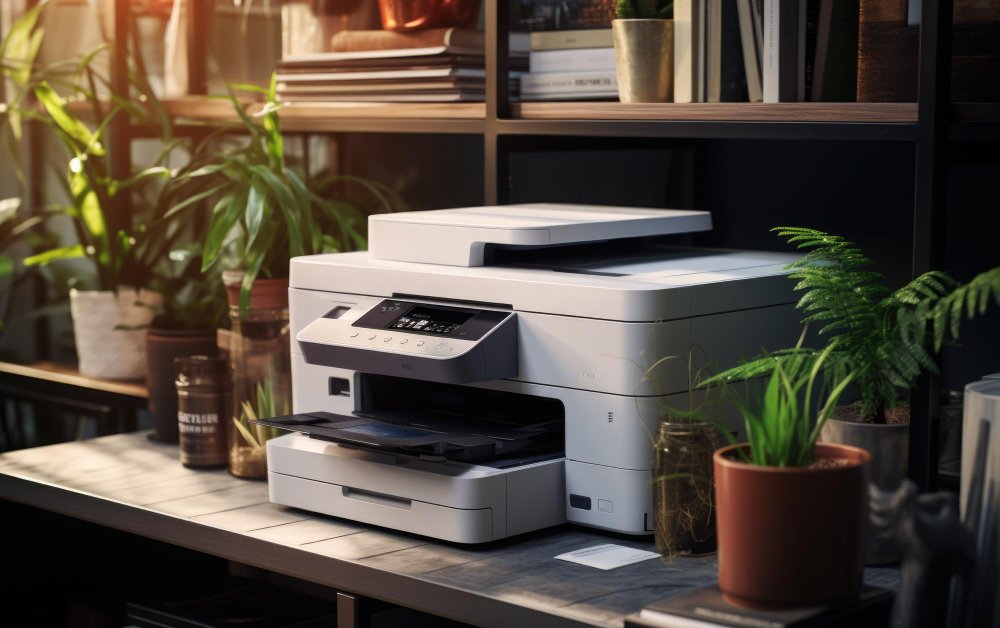What Are the Benefits of Embracing Wireless Printers?
Printing technology has undergone a remarkable evolution, revolutionizing the way we approach document processing and dissemination. From the early days of mechanical presses to the advent of digital printers, each phase has brought significant advancements. However, in recent years, the emergence of wireless printing solutions has marked a transformative leap in the realm of printing technology.
The evolution of printing technology has been a narrative of continuous innovation, from Gutenberg’s printing press in the 15th century to the modern-day sophisticated laser and inkjet printers. This evolution has not only improved printing quality and speed but has also expanded the possibilities of where and how we print.
In tandem with technological advancements, the rise of wireless printing solutions has reshaped conventional printing methods. These solutions liberate users from the constraints of wired connections, offering unprecedented flexibility, mobility, and convenience. The convergence of wireless connectivity with printing technology has opened new horizons, allowing users to print seamlessly from various devices, regardless of their physical proximity to the printer.
Together, the evolution of printing technology and the ascent of wireless printing solutions have redefined the landscape of document management, making printing more accessible, efficient, and versatile than ever before. This amalgamation of historical progress and modern innovation continues to pave the way for a more connected and streamlined printing experience.
If you’d like more information about this article, please visit our website, the best source for further details. https://printingnearby.com/
Flexibility and Mobility

Printing from Anywhere:
Wireless printers redefine the traditional constraints of printing by allowing users to print from virtually any location within the network range. This liberating feature enables individuals to execute print jobs without being physically tethered to the printer. Whether you’re in a different room, a co-working space, or even outside the office, the ability to send print commands wirelessly grants an unprecedented level of convenience.
Accessibility Across Devices:
One of the significant advantages of wireless printers is their compatibility across a spectrum of devices. These printers seamlessly connect with various gadgets, including laptops, smartphones, tablets, and desktop computers. Through technologies such as Wi-Fi Direct, Bluetooth, or cloud-based printing solutions, users can effortlessly access the printer from different devices without the hassle of wired connections. This compatibility streamlines workflows and enhances accessibility, allowing for a smooth printing experience regardless of the device being used.
Ease of Installation and Setup
User-Friendly Interfaces
Wireless printers come equipped with intuitive interfaces designed for easy navigation and accessibility. Manufacturers prioritize user experience by implementing straightforward control panels and menus. These interfaces are designed to be easily understood, even by individuals with minimal technical expertise. The user-friendly nature of these interfaces simplifies the printing process, allowing users to execute print tasks, adjust settings, check ink levels, and troubleshoot issues with ease. The clear and concise layout ensures a hassle-free experience for individuals across various proficiency levels.
Time-Efficient Installation
Setting up a wireless printer is remarkably quicker and simpler compared to traditional wired printers. The installation process typically involves a few straightforward steps that can be completed within minutes. Modern wireless printers often come with comprehensive installation guides and automated setup wizards that guide users through the process. With the absence of complex cables and physical connections, users can effortlessly connect their devices to the printer, configure the network settings, and begin printing promptly. This time-efficient installation saves valuable time, making the printer ready for immediate use, contributing to increased productivity.
Space Efficiency and Decluttering
Eliminating Cable Clutter
One of the most noticeable benefits of wireless printers is their ability to eliminate the clutter caused by cables and wires. Unlike traditional printers that require wired connections to function, wireless printers operate without the need for physical links. This absence of cables not only contributes to a tidier workspace but also eliminates the hassle of managing and untangling wires. By removing this physical clutter, wireless printers create a cleaner and more organized environment, reducing potential hazards and creating a more aesthetically pleasing workspace.
Optimizing Placement Options
The freedom from wired connections offers unparalleled flexibility in terms of printer placement. Wireless printers provide the freedom to position the device in the most convenient or optimal location within the network range. Users can place the printer anywhere within the wireless signal’s reach, whether it’s in a corner of the office, a shared workspace, or even tucked away in a cabinet. This flexibility in placement ensures that the printer is easily accessible to all authorized users while optimizing space and contributing to a more functional and efficient workflow.
Enhanced Connectivity Options

Wi-Fi Direct and Bluetooth Connectivity
Wi-Fi Direct: This feature allows wireless printers to establish a direct connection with other devices without the need for a router. It enables seamless communication between the printer and devices like laptops, smartphones, or tablets. Users can print directly from their devices by connecting to the printer’s Wi-Fi Direct network, simplifying the printing process and enhancing accessibility.
Bluetooth Connectivity: Some wireless printers are equipped with Bluetooth functionality, enabling users to connect and print from Bluetooth-enabled devices. This wireless technology offers a convenient and direct way to send print jobs, particularly useful for quick and easy printing from smartphones or tablets without relying on a Wi-Fi network.
Compatibility with Multiple Devices
Wireless printers are designed to be compatible with a diverse range of devices, ensuring accessibility for users across different platforms and operating systems. Whether it’s Windows, macOS, iOS, Android, or even Linux-based systems, these printers seamlessly integrate with various devices. This compatibility extends to laptops, desktop computers, smartphones, and tablets, providing a versatile printing solution that caters to the needs of different users within a household or workplace. The ability to print from multiple devices with ease contributes to a more efficient and connected printing environment.
Cost-Effectiveness and Energy Efficiency
Reduced Power Consumption
Wireless printers are designed to operate efficiently, consuming less power compared to their wired counterparts, especially when in standby mode. These printers are engineered to enter low-power states when not in use, conserving energy and contributing to reduced electricity consumption. The implementation of energy-saving features ensures that wireless printers consume minimal power when idle, resulting in cost savings over time and a reduced environmental footprint.
Minimized Need for Additional Cables
Unlike traditional printers that require a myriad of cables for connectivity, wireless printers significantly reduce the need for additional cables. The absence of various cords, such as USB cables or Ethernet wires, simplifies the setup and minimizes clutter. Users no longer need to worry about purchasing or managing multiple cables, leading to cost savings and a more streamlined and organized workspace. The wireless connectivity of these printers eliminates the dependence on physical connections, offering a hassle-free printing experience without the entanglement of cables.
Collaboration and Sharing
Seamless Resource Sharing
Manufacturers design wireless printers to operate efficiently, consuming less power compared to their wired counterparts, especially when in standby mode. Engineers engineer these printers to enter low-power states when not in use, conserving energy and contributing to reduced electricity consumption. The implementation of energy-saving features ensures that wireless printers consume minimal power when idle, resulting in cost savings over time and a reduced environmental footprint.
Support for Multi-User Access
Unlike traditional printers that require a myriad of cables for connectivity, wireless printers significantly reduce the need for additional cables. The absence of various cords, such as USB cables or Ethernet wires, simplifies the setup and minimizes clutter. Users no longer need to worry about purchasing or managing multiple cables, leading to cost savings and a more streamlined and organized workspace. The wireless connectivity of these printers eliminates the dependence on physical connections, offering a hassle-free printing experience without the entanglement of cables.
Security Features
Advanced Security Protocols
Wireless printers offer unparalleled convenience and flexibility in modern printing. Unlike traditional printers, these devices connect seamlessly to your network, allowing you to print from any location within the wireless range. With compatibility across various devices, including laptops, smartphones, and tablets, wireless printers simplify printing tasks, eliminating the need for cumbersome cables and enabling effortless printing from virtually anywhere. Their user-friendly interfaces and easy installation make them an ideal choice for enhancing productivity in homes and offices, providing a clutter-free and efficient printing solution for today’s dynamic digital environments.
Protection against Unauthorized Access
Wireless printers prioritize security measures to prevent unauthorized access and safeguard sensitive information. These printers incorporate robust security features to mitigate potential risks and ensure data integrity. Advanced encryption protocols, secure network configurations, and password protection mechanisms are implemented to thwart unauthorized access attempts.
Encryption technologies, such as WPA/WPA2 (Wi-Fi Protected Access), encrypt data transmissions between devices and the printer, preventing interception or tampering with sensitive information. Password protection features enable users to set access controls, allowing only authorized individuals to use the printer, thus preventing unauthorized printing or access to stored documents.
Additionally, secure network configurations and regular firmware updates fortify the printer’s defenses against evolving security threats. These measures collectively create a secure printing environment, assuring users that their data remains protected and confidential from unauthorized users or potential cyber threats.















